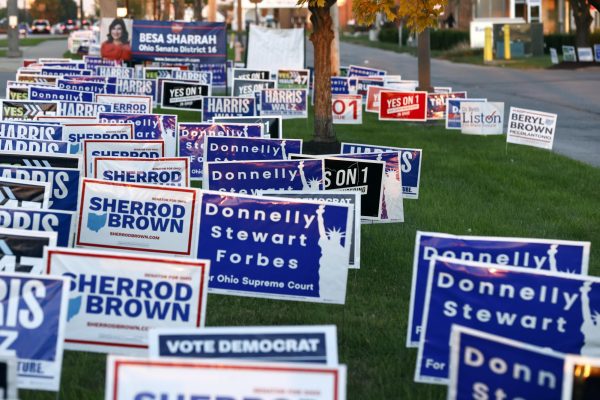Sustainability: How to Be Spooky Yet Sustainable This Halloween
The spookiest part of Halloween isn’t the haunted houses or frightening decorations; it’s the amount of waste produced by its celebration. From the excess purchasing of costumes to the plastic decorations bought, used and thrown away each year, Halloween is more wasteful than one might originally think. However, there are easy ways to combat this frightening fact and celebrate your Halloween more sustainably.
Each year, the United States places an estimated one billion tons of pumpkin in landfills, which results in the production of copious amounts of methane gas, ac- cording to Uniearth, an Instagram page dedicated to educating the public about sustainability. With some simple swaps, you can do your part to decrease the weight this year.
Uniearth recommends saving the pumpkin seeds from carved creations and toasting them for a convenient snack. Not only are they easy to cook, but they are also nutritious. According to Healthline.com, the seeds are packed with healthy fats and essential minerals, such as magnesium and zinc. If pumpkin seeds are not your thing, that’s okay; pumpkin insides are also highly nutritious for all kinds of wildlife. Leaving your pumpkin leftovers outside or near parks could give our local wildlife a healthy fall snack.
If you have a green thumb, you can also save the seeds and plant your own pumpkins for next year. Another easy fix is to buy your pumpkins locally, which helps eliminate the carbon emissions that result from the transportation of pumpkins, according to Audacity.com. Here in Hamilton, students and staff can visit Mosher Farms, an eight-minute drive from Colgate. This will benefit both the environment and local economy.
In the age of online shopping and costume procrastination, it seems so easy to just click a few buttons on Amazon and have your get-up arrive within days. While this option is tempting, it does prove to be quite harmful to the environment. One easy way to reduce your carbon footprint when it comes to costume creation is by simply taking a glimpse into your closet. You do not have to find your whole costume
in that closet, but even finding a skirt or statement top alternative will help eliminate waste. In addition to this, your friends also have closets full of possible costume options that (with their permission, of course) you can browse through. If neither of those options work for you, there is always the option of visiting a thrift store. The Bargain Basket Thrift Shop is located just 5.4 miles away from Colgate — approximately a seven-minute drive — and can help you and your friends shop more sustainably this Halloween. If all else fails and you must turn to the internet, do some research on the websites you are using in regards to their sustainability. Goodonyou.com is a site that assesses the sustainability of clothing brands with a quick search and the click of a button. It also provides you with affordable alternatives to some less sustainable clothing brands.
While plastic skeletons and pumpkin trick-or-treating baskets have long been Halloween staples, they contribute to the large amount of waste after Halloween each year. Lucky for us, there are many eco-friendly alternatives that help make Halloween decorating more sustainable, such as: harvested pumpkins, gourds, straw or hay bales, corn stalks, reusable decorations like a Halloween garland or a spooky banner and swapping the plastic, pumpkin Trick-or-Treating baskets for a pillowcase instead (as suggested by Green Child Magazine). The waste attributed to Halloween decorations isn’t limited to plastic waste, however. “Blow-Ups” used to decorate the front lawns of many houses use a significant amount of electricity. A sustainable alternative would be to use solar-powered or LED lights to illuminate a spooky display to keep the creative and decorative aspect of Halloween that so many families look forward to each year.
This time of year is quite busy, causing us to take the quick and easy route when it comes to Halloween preparation, yet we should never stop to think about how our choices may affect the environment around us. By taking an extra second to think about your choices and their impact on the environment, you can make a big difference for the community.






